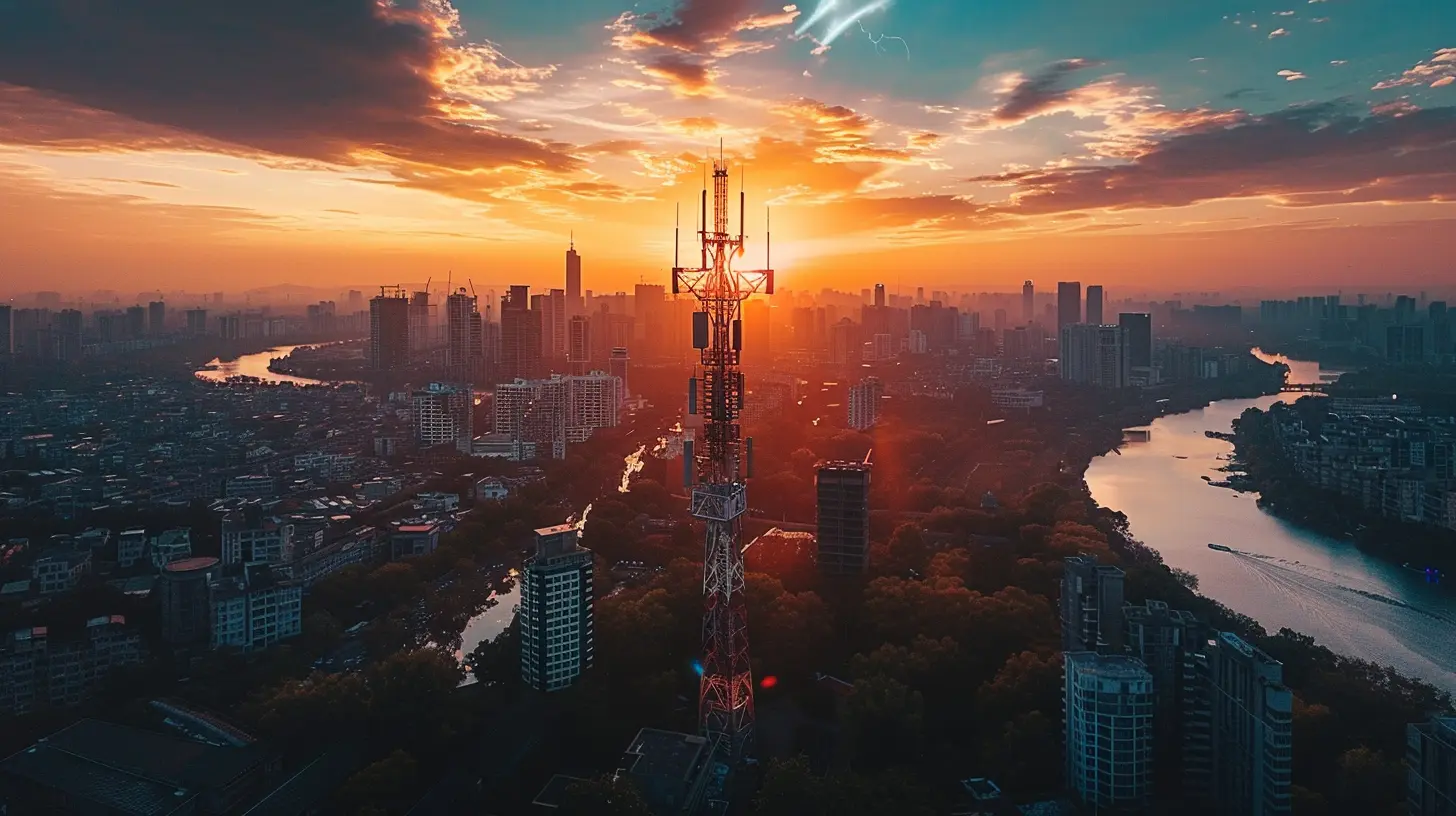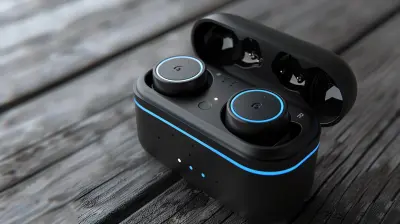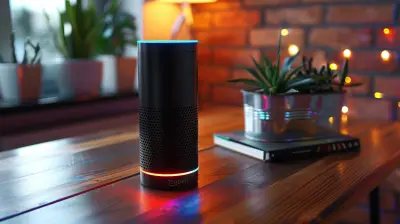The Role of 5G in Enhanced Disaster Relief and Recovery
10 May 2025
When disaster strikes, every second counts. Whether it’s an earthquake, a hurricane, or a wildfire, emergency response teams need fast, reliable communication to save lives. That’s where 5G comes in.
5G technology isn’t just about faster internet speeds or better streaming quality; it’s a game-changer for disaster relief and recovery efforts. With its low latency, massive connectivity, and ultra-reliable communication, 5G has the potential to transform how emergency responders react to crises.
So, how exactly does 5G enhance disaster management? Let’s break it down. 
1. Faster Communication, Faster Response
In a disaster situation, communication breakdowns can be deadly. Traditional networks often struggle under heavy demand, leading to congested signals and slow response times.How 5G Changes the Game
- Low Latency: 5G networks operate with ultra-low latency (as low as one millisecond). That means emergency teams can send and receive critical data in real time without lag.- Uninterrupted Connectivity: Unlike 4G, which can become overloaded in crisis zones, 5G can handle massive amounts of data simultaneously without interruptions.
- Instant Coordination: Emergency responders can coordinate more efficiently, ensuring that resources are allocated where they're needed most.
Imagine a wildfire spreading rapidly—firefighters need real-time updates on wind directions, temperature changes, and evacuation orders. 5G ensures that this information is delivered without delay. 
2. Drones and Robotics for Search and Rescue
During disasters, reaching victims trapped under debris or in dangerous zones can be extremely difficult and risky. This is where drones and robotic systems come in, and 5G makes them even more effective.The 5G Advantage in Search and Rescue
- Real-Time Video Streaming: With 5G, drones can transmit high-definition video instantly, allowing rescue teams to assess situations remotely before sending in personnel.- Autonomous Rescue Bots: Advanced robotics powered by 5G can navigate through collapsed buildings or hazardous zones, searching for survivors without putting human lives at risk.
- Faster Deployment: Because 5G allows for real-time control of drones and robots, emergency teams can deploy resources faster than ever.
Think of 5G as the brain behind these smart machines, ensuring they operate efficiently without disruptions. 
3. Smart Sensors and IoT for Disaster Prediction
Wouldn’t it be great if we could predict disasters before they happen? While we can't prevent natural calamities, 5G-powered smart sensors and the Internet of Things (IoT) can help detect early warning signs.How IoT and 5G Work Together
- Seismic Sensors for Earthquakes: 5G-enabled sensors can detect ground vibrations and send alerts within milliseconds, potentially giving people more time to take cover.- Flood and Weather Monitoring: IoT devices can track rainfall, river levels, and air pressure in real time, helping authorities anticipate and prepare for floods or hurricanes.
- Infrastructure Monitoring: Sensors installed on bridges, buildings, and dams can detect structural weaknesses before they collapse, preventing secondary disasters.
5G ensures these devices always stay connected and deliver real-time data without network delays. 
4. Telemedicine and Remote Medical Assistance
In disaster-stricken areas, medical facilities are often overwhelmed or completely inaccessible. 5G can bridge this gap by enabling remote medical consultations and even robotic surgeries.Medical Support When It’s Needed Most
- Remote Surgeries and Consultations: Surgeons can guide local healthcare workers through complex procedures using augmented reality (AR) and 5G-powered video calls.- Wearable Health Devices: Injured survivors can wear smart health monitors that instantly transmit vital signs to medical teams, ensuring timely intervention.
- AI-Powered Diagnoses: Artificial intelligence (AI) can analyze patient data in real time to diagnose diseases and recommend treatments.
In critical situations, getting medical help fast can mean the difference between life and death. 5G makes that possible.
5. Reliable Communication for First Responders
During large-scale disasters, communication networks are often the first to go down. Traditional cell towers may be damaged, and even satellite-based systems can face disruptions.5G-Powered Emergency Networks
- Deployable 5G Networks: Portable 5G towers can be set up within minutes to restore connectivity in affected areas.- Secure and Private Channels: First responders can communicate over dedicated, high-speed 5G networks without interference.
- Real-Time Language Translation: With AI-driven language translation, aid can be coordinated seamlessly across different regions and languages.
With 5G, emergency response teams can stay connected, no matter how chaotic the situation gets.
6. Augmented Reality (AR) and Virtual Reality (VR) for Disaster Training
Preparation is key in disaster management. Thanks to 5G, AR and VR simulations can enhance training programs for first responders, making them better prepared for real-life emergencies.How AR & VR Improve Disaster Training
- Realistic Disaster Simulations: 5G-powered VR can place responders in lifelike crisis scenarios, improving their decision-making skills.- Remote Training: Responders from different locations can train together in a shared virtual space, reducing costs and logistical challenges.
- Hands-Free Assistance: Using AR glasses, paramedics can receive step-by-step guidance while treating patients in the field.
By integrating 5G with AR and VR, first responders can train smarter and respond faster when the real crisis hits.
7. Public Safety and Faster Evacuations
Speedy evacuations can save countless lives during disasters. 5G-powered smart city systems can streamline evacuation processes, making them more effective.Tech-Driven Evacuation Strategies
- Real-Time Traffic Management: Smart traffic lights and connected vehicles can adjust routes to speed up evacuations.- Mass Notifications: Authorities can send instant, location-based emergency alerts to mobile devices, ensuring everyone receives updates.
- Crowd Monitoring: AI-driven surveillance can detect crowd movements and predict bottlenecks, improving evacuation strategies.
With 5G in place, disaster-affected populations can receive timely guidance, minimizing casualties and chaos.
Challenges and Future Prospects
While 5G has tremendous potential, there are challenges in implementing it for disaster relief. Infrastructure costs, network coverage gaps, and security concerns must be addressed before 5G becomes a universal disaster management tool.However, governments, tech companies, and humanitarian organizations are already working to expand 5G’s reach. As technology advances, we can expect even more innovative solutions for disaster response and recovery.
Final Thoughts
5G is more than just a technological upgrade—it’s a lifeline during disasters. From improving communication to enabling real-time data transfer, search-and-rescue operations, and medical response, 5G is set to revolutionize disaster relief efforts.In the future, as 5G networks continue to grow, disaster management will become faster, smarter, and more efficient. And in times of crisis, that could mean the difference between life and death.
all images in this post were generated using AI tools
Category:
5g TechnologyAuthor:

Adeline Taylor
Discussion
rate this article
6 comments
Barrett McDermott
This article effectively highlights the transformative potential of 5G technology in disaster relief. By enabling faster communication and real-time data sharing, 5G can significantly improve response efforts. However, addressing infrastructure challenges remains crucial for its successful implementation in all areas.
May 16, 2025 at 2:42 AM

Adeline Taylor
Thank you for your insightful comment! I agree that while 5G holds great promise for improving disaster relief, tackling infrastructure challenges is essential for its full benefits to be realized.
Karly Gomez
Great insights! The potential of 5G in improving disaster relief and recovery is truly transformative. Excited to see its impact in action!
May 15, 2025 at 11:57 AM

Adeline Taylor
Thank you! I'm excited about the possibilities too, and I appreciate your enthusiasm for this transformative technology!
Rivera Williams
5G technology is a game-changer for disaster relief, enabling real-time communication, rapid data sharing, and efficient resource allocation. By harnessing its power, we can transform recovery efforts and save lives when they matter most. The future is connected!
May 14, 2025 at 12:16 PM

Adeline Taylor
Thank you for your insightful comment! Indeed, 5G's capabilities can significantly enhance disaster response and recovery efforts, making a real difference in saving lives.
Maren Cruz
5G in disaster relief? Finally, a tech that can deliver help faster than my pizza! Let’s just hope it doesn’t drop the connection while rescuing my Wi-Fi signal too!
May 14, 2025 at 5:00 AM

Adeline Taylor
Glad you see the potential! 5G's reliability can indeed enhance communication during disasters, ensuring help arrives faster. Fingers crossed for strong connections all around!
Kova Curry
5G technology holds transformative potential for disaster relief by enabling real-time communication, rapid data sharing, and improved resource allocation. Its low latency and high capacity empower first responders and aid organizations to coordinate effectively, ultimately saving lives and accelerating recovery efforts.
May 12, 2025 at 6:52 PM

Adeline Taylor
Thank you for your insightful comment! I completely agree that 5G’s capabilities can significantly enhance disaster relief efforts by facilitating better communication and coordination among responders.
Barbara Lawrence
5G technology is transforming disaster relief, empowering first responders with real-time data and connectivity. It enables faster communication and coordination, ensuring timely assistance and recovery. Together, we can harness this innovation to save lives and rebuild communities more effectively!
May 11, 2025 at 4:57 AM

Adeline Taylor
Thank you for highlighting the impact of 5G in disaster relief! Its ability to provide real-time data and enhance communication is indeed crucial for saving lives and accelerating recovery efforts.




